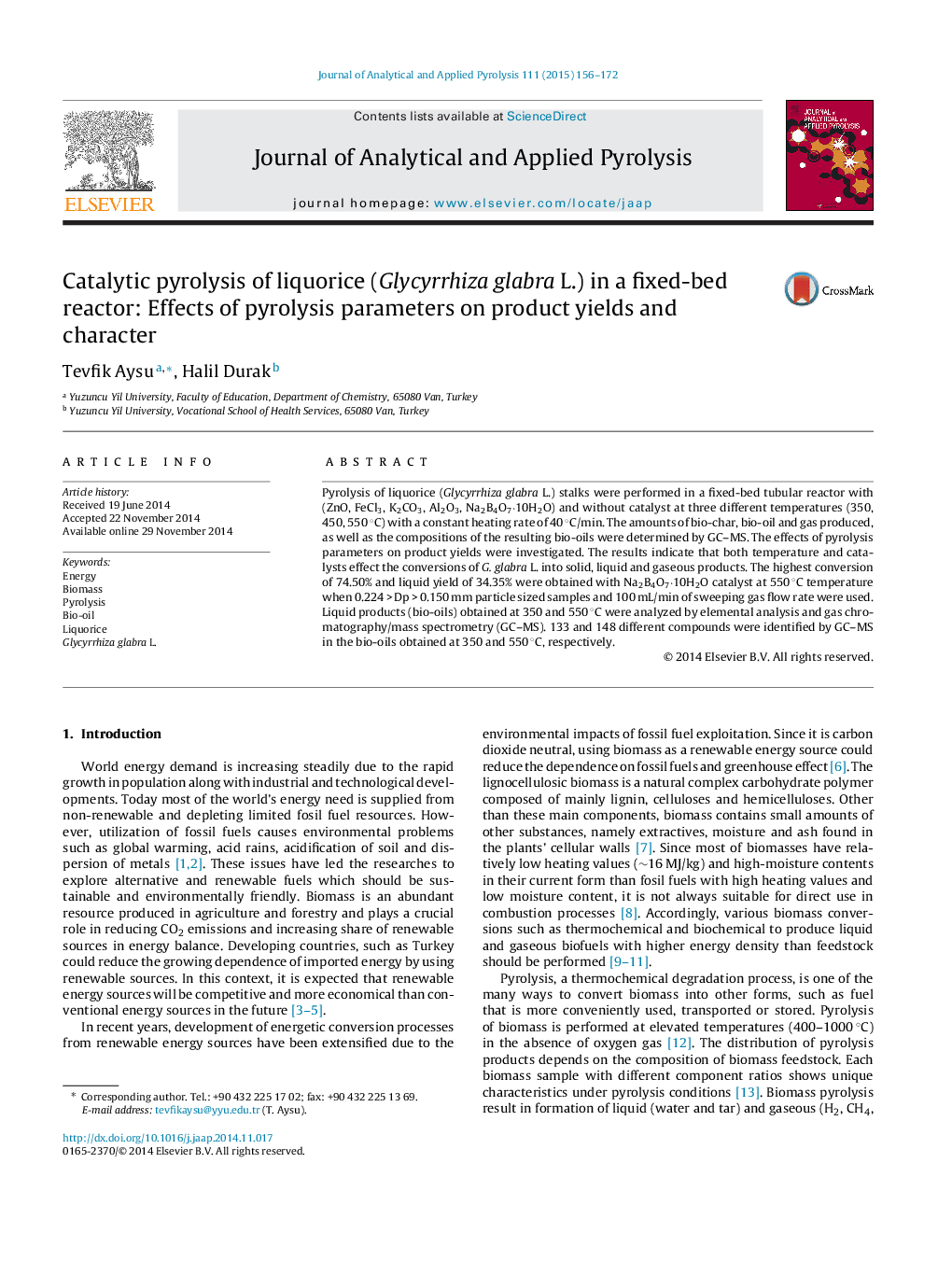| Article ID | Journal | Published Year | Pages | File Type |
|---|---|---|---|---|
| 1196714 | Journal of Analytical and Applied Pyrolysis | 2015 | 17 Pages |
•Glycyrrhiza glabra L. stalks were converted to solid, liquid and gaseous products.•Effects of temperature and catalysts on product yields were investigated.•The highest conversion of 74.50% and liquid yield of 34.35% were obtained with Na2B4O7·10H2O at 550 °C.•148 different compounds were identified by GC–MS in the bio-oils obtained at 550 °C.
Pyrolysis of liquorice (Glycyrrhiza glabra L.) stalks were performed in a fixed-bed tubular reactor with (ZnO, FeCl3, K2CO3, Al2O3, Na2B4O7·10H2O) and without catalyst at three different temperatures (350, 450, 550 °C) with a constant heating rate of 40 °C/min. The amounts of bio-char, bio-oil and gas produced, as well as the compositions of the resulting bio-oils were determined by GC–MS. The effects of pyrolysis parameters on product yields were investigated. The results indicate that both temperature and catalysts effect the conversions of G. glabra L. into solid, liquid and gaseous products. The highest conversion of 74.50% and liquid yield of 34.35% were obtained with Na2B4O7·10H2O catalyst at 550 °C temperature when 0.224 > Dp > 0.150 mm particle sized samples and 100 mL/min of sweeping gas flow rate were used. Liquid products (bio-oils) obtained at 350 and 550 °C were analyzed by elemental analysis and gas chromatography/mass spectrometry (GC–MS). 133 and 148 different compounds were identified by GC–MS in the bio-oils obtained at 350 and 550 °C, respectively.
